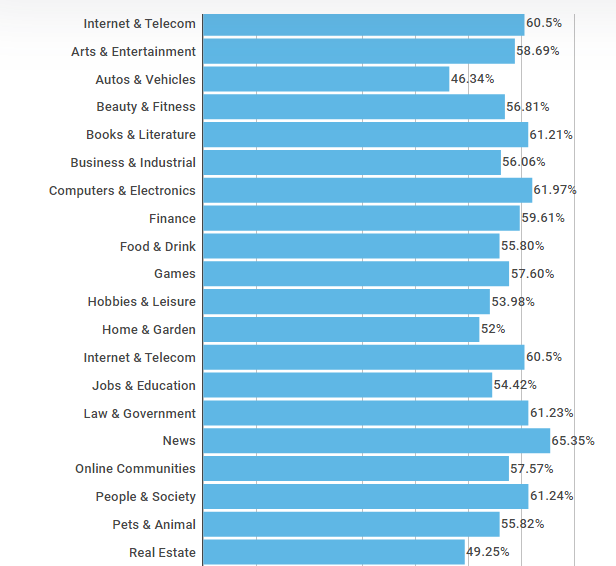What is a Bounce Rate & How Can I Change It?
One of the key metrics in Google Analytics is your website's bounce rate. Often the numbers, which are in percentages, are high and this gets many website owners worried for two reasons. Firstly because they don't really understand about what a bounce rate is and secondly because they don't know what to do about it. Today we're going to discuss both of these points for you.
What is a Bounce Rate?
Google Analytics defines a bounce as being the number of single page sessions on your website. This means when someone arrives at your website, they only visit the page they land on before clicking elsewhere. Your bounce rate is therefore the percentage of all visits to your site in which a visitor only looked at one page.
Where lots of people become concerned is when they see they have a large bounce rate. Depending on the type of site you have, this could be a bad thing or a good thing. It's bad if in order for your website to be successful, you need people to visit multiple pages. But it's good if you only have a one page site, or it's a page you would expect people to only view alone.
What Does It Mean if I Have a High Bounce Rate?
There are several reasons as to why you are seeing a high bounce rate for your site. They could include:
- the visitor did not find what they were looking for
- your meta description inaccurately described what the page was about
- you failed to include a call to action on the page
- they didn't like something about your website - colour, loading speed, font, images etc
- the visitor found all of the information they were looking for
- the quality of the page was low
Let's take a look at what bounce rate you should be aiming to achieve for your website.
What's a Good Bounce Rate?
In general, B2B or business to business websites have higher bounce rates than B2C or business to customer websites. But each industry has it's own average percentage when it comes to bounce rates. Neil Patel shared this chart on his website which showed the average bounce rate for a range of industries.

From this we can say that if your bounce rate is around 45-60%, then you're pretty average. When you should worry is if it reaches around 70-80% or it is unnaturally low.
How Can I Lower My Bounce Rate?
Before you make any changes to your site, take the time to analyse which of your pages have high and low rates. See if you can nail down the reasons why, which may include:
- the design of the page
- the layout of the page
- colours, images or fonts used
- the copy on the page
- the ads you have used to get people to that page
- types of calls to action
- the traffic sources for each page
Once you have a better understanding, you can take the steps to begin reducing the bounce rate of one or many website pages. Different things you can try to lower the rate include:
- adjust your ads to attract the right sort of traffic
- change your keywords
- include hyperlinks within your text to other pages on your site
- add easy to spot calls to action, such as buttons or large text
- check out and fix the usability of your website
- ensure your site is optimised for mobile and other devices
- add images and videos to engage visitors
- offer live chat support
If you're really concerned about your bounce rate and would like some support, we suggest contacting one of our SEO professionals or web designers to help you out.
Posted: Friday 5 October 2018


